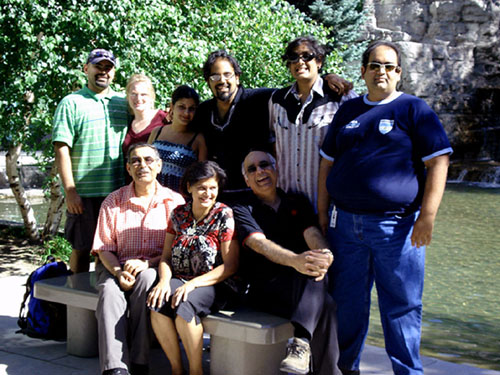 |
| The map showing the voyage of Columbus to Trinidad in 1498 |
The books are a gift on the occasion of the 50th anniversary of the independence of Trinidad & Tobago.
The publications are: La Trinidad Española (Spanish Trinidad, 2011, AECID, Prof. Francisco Morales Padrón) and Historia de las Antillas no Hispanas (History of the Non-Hispanic Antilles, 2011, CSIC, Prof. Ana Crespo and María Dolores González-Ripoll).
The first one is being translated into English at the University of the West Indies. The diplomat has said that he hopes it would provide "the much needed Spanish version of the history of Trinidad and of the larger Caribbean region."
The Embassy is working with the Ministry of Foreign Affairs and Communication and the Post Office (TTPOST) to present a special commemorative stamp to mark the 50th Anniversary of T&T's independence.
 |
| Adrian Camps-Campins |
The stamp will be based a painting commissioner by the Government of Spain by well-known Trinidad artist Adrian Camps-Campins titled "The last meeting of the Cabildo of Port of Spain, February 1797. Camps-Campins is of Spanish-French ancestry.
The ministry and the Spanish embassy will exchange presentations in June.
The ambassador is also working with the Fundación Nao Victoria in Seville in order to locate, copy and bring to Trinidad a selection of maps and documents related to the country and to the Eastern Caribbean.
The documents are kept in the Spanish archives in Madrid, Simancas, Seville and Santa Cruz and are considered to be the most reliable source of history of the Americas from the 15th to the 18th centuries.
According to the ambassador, most Spanish sources confirm that Columbus used eight ships for his 1498 voyage in which he discovered Trinidad, not three as documented in British history books. He was accompanied by 226 men, among them, and for the first time in his life, the famous Bartolomé de las Casas. The names of the ships were:
According to the ambassador, most Spanish sources confirm that Columbus used eight ships for his 1498 voyage in which he discovered Trinidad, not three as documented in British history books. He was accompanied by 226 men, among them, and for the first time in his life, the famous Bartolomé de las Casas. The names of the ships were:
- Santa Cruz
- Santa Clara
- La Castilla
- La Gorda
- La Rábida
- Santa María de Guía. (Not the Santa Maria that was used in his voyage of 1492. That vessel sank off the shore of Haiti in December of 1492. Columbus returned to Spain with only two vessels, the Niña and the Pinta).
- La Gaza
- La Vaqueña. (It’s possible that this was the ship from which the Admiral first saw Trinidad)



No comments:
Post a Comment